WORLD TRAVEL NEWS ARTICLE
MEXICO
With an enormous population believed to be in excess of 111 million, considerable poverty exists throughout the country. Spanish is the main language spoken, also Nahuatl and other Amerindian languages. There are sixty or so dialects which are spoken by some of the Amerindians that stem from ancient languages from pre Columbian times.
The currency is the Mexican peso – 1 peso = 100 centavos. For the latest exchange rates visit www.xe.com
AICM (el Aeropuerto Internacional de la Ciudad de Mexico) the International Airport otherwise known as Aeropuerto Internacional Benito Juarez is eight miles east of Mexico city and the second Toluca Airport is now frequently used as an alternative. For current visa requirements visit www.projectvisa.com
Most of the country comprises volcanic mountain ranges and high plateaus where earthquakes are regular occurrences. It is only along the Pacific coastline, the Gulf of Mexico and the Yucatan Peninsular that low lying areas are to be found. Two thirds of Mexico is more than 1650 ft above sea level.
Agriculture is of major importance despite the dry terrain. Food is supplied to the United States as well as being grown for the home market, principally maize, wheat, beans, sugar cane, fruit, vegetables, cotton and coffee. Numerous cattle are reared here. The many irrigation schemes that have been and are being introduced are vitally important in these very arid lands.
In addition there is steel and cement production, and a motor industry which ensures the self sufficiency of Mexico. There is mining of silver, uranium, copper, sulphur, lead and zinc and Mexico has natural gas. Vast oil fields are drilled in the Tabasco District.
Chiapas, the state in the extreme south of Mexico near the Sierra Madre del Sur Guatemalan border on the Gulf of Tehuantepec, although poor now, was once the seat and stronghold of the ancient Mayan Civilization whose Golden Age was from AD250–900. Artefacts of incredible age have been found (intact) at Palengue, Monte Alban, Chichen Itza and the Uxmel ruins in Oaxaca. A jade bejewelled skeleton was found in the Yucatan Peninsular jungle dated AD300.
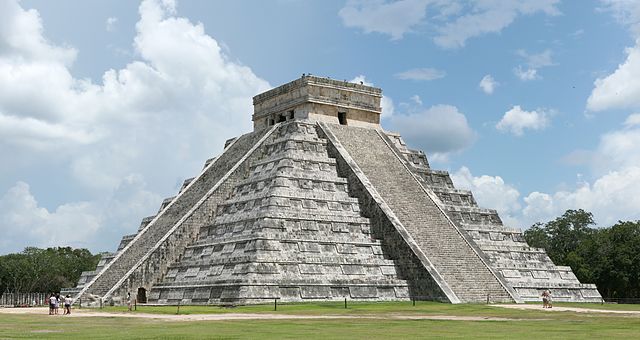
Chichen Itza
In the thirteenth century there was domination by Aztecs from the north who were exceptionally bloodthirsty, and sacrifices of human lives were a daily occurrence. Two centuries on, however, the Aztecs were to be conquered by an extremely barbaric Cortes.
In 1517 Spanish from Cuba found these lands and were determined to have the gold that they saw there. They returned to Cuba and regrouped. Headed by Hernan Cortes, they arrived at Vera Cruz in 1519 where they were greeted with gifts by the followers of the Aztec ruler, the warrior Moctezuma II. Despite reciprocating these friendly overtures, the Spanish intention was always to subdue Moctezuma and his followers and take the gold. They marched to Texcoco Lake where they formed their HQ. Moctezuma II had resentful subjects due to all those sacrifices, and were easily lured into the Cortes camp were they were killed by the Spanish.
In 1821 Mexico won its independence from Spain with 600,000 lives lost. Territory was also lost as the United States of California, Texas, Arizona, Florida, New Mexico, Utah and parts of Colorado and Wyoming all formerly belonged to Mexico.
Mexico City - For seven hundred years a capital city has occupied this site and been the centre of the nation. Mexico’s Day of Independence is 16 September. The Capital, smog city of the world, is the fastest growing city on earth, with over twenty million living in Mexico City. Chilangos is the name given to the citizens. Despite the affluence of the centre, shanty town dwellings exist in their thousands and rubbish pickers eke out a living from the pittance they are able to earn dealing with the city’s garbage. Sadly, most have been lured to the city to escape the lean lives they led in agriculture. They have merely exchanged rural poverty for urban deprivation.
Mexico City was formerly known as Tenochtitlan (meaning place of the wild prickly pear) when it was the capital of Central America’s greatest empire, that of the Aztecs, during the 14th century.
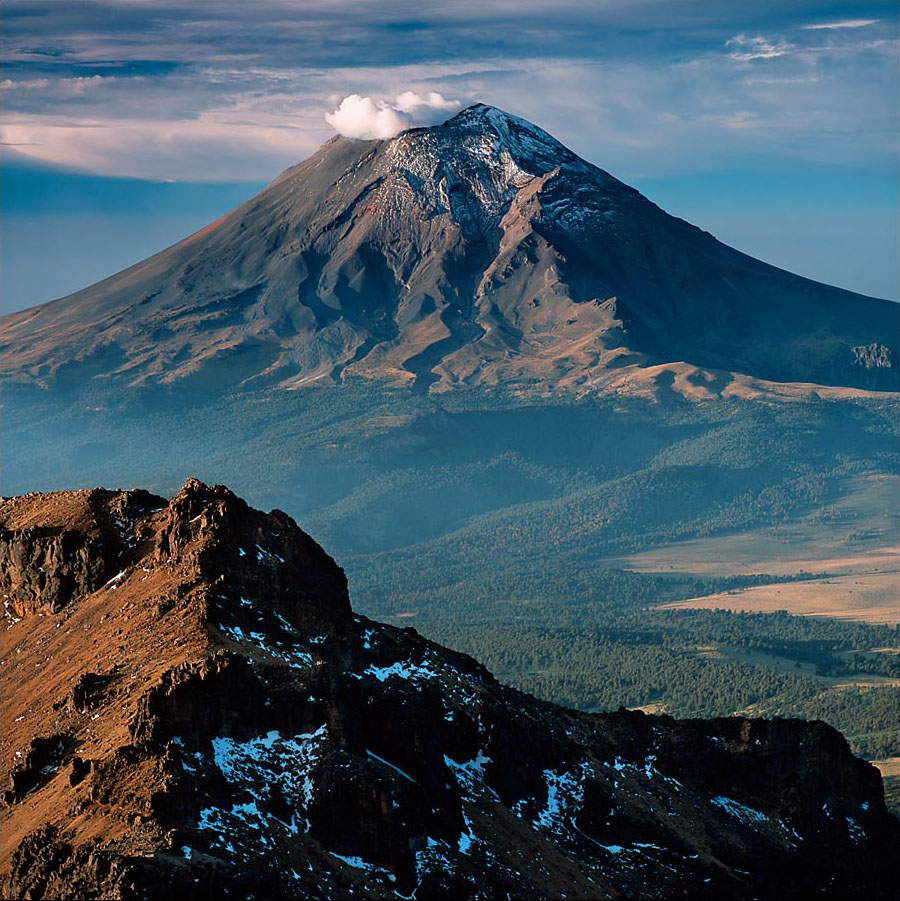
Mount Popocatepetl, Mexoco
Volcano Popocatepetl at 17,887 ft, lies to the south of the city, while the highest peak in Mexico is Pico de Orizaba at 18,637 ft.
The stunning Metropolitan Cathedral (a Santiago de Compostela look alike) is to be found on Zocalo, the vast civic square in the city centre which is an open space where the Aztecs used to worship. The Plaza of Three Cultures reflects the three main cultural influences on the city. First there is the Aztec Pyramid where Cuauhtémoc made his last stand in 1521, then there is the Baroque Church of St James built three years later by the Conquistadores and finally there are the modern day high-rise buildings surrounding the square.
The modern mixes comfortably with the ancient. Architect Pedro Raminez Vazquez and giant mural art exponents Diego Rivera and Jose Orozco all born here, have left their mark in their highly decorated and bright buildings. Mexicans love bold colours. They also take pride in the history of Mexico, and thus Spanish colonial churches and squares mix happily with the work of Rivera. The crater of an extinct volcano has simply been embellished to form a modern style monument, blending in to the surroundings.
Mexico City has the largest bullring in the world with weekly fights year round.
Paseo de la Reforma is the magnificent thoroughfare that runs between Chapultepec and the red volcanic rock National Palace. Part way along there is the mighty Eagle emblem on its column. The ornately furnished Castle of Chapultepec has a zoo, 2,000 acres of gardens, and its Grasshopper Hill is a favourite picnic place for Chilangos. There is also the lovely Alameda central park with its cool fountains and lush flowers to enjoy.
Convents, Olympic stadiums, street markets, a modern subway, the oldest university in South America (built 1551 with subsequent additions), Mexico City provides a feast for the eyes. See the art nouveau glass dome of the Gran Hotel de la Ciudad and visit the Shrine of our Lady of Guadalupe and the basilica of Capilla del Pocito with its Spanish tiles in Muslim geometric designs. Further away are the Temples of Teotihuacan and the Pyramid of the Sun.
Chihuahua is the largest state of Mexico on the US border with Texas and New Mexico and known best for the breed of miniature dog which takes its name.
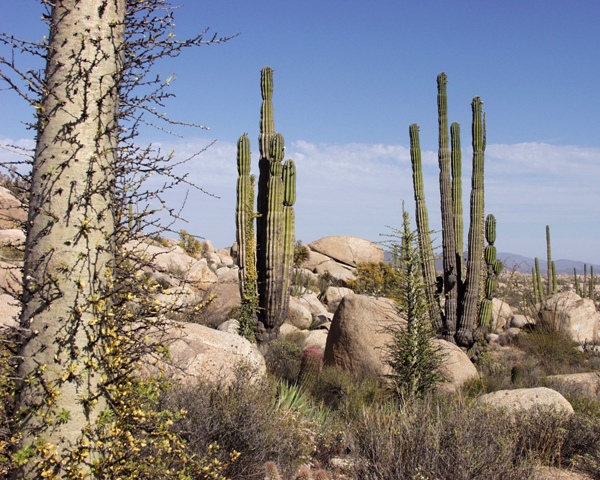
Baja Desert, Mexico
Baja California is a region of granite mountains, scrubby desert and virtually no rain. The stretch of water that lies between it and the mainland of Mexico is called the Bay or Gulf of California and used to be known as The Sea of Cortes.
The Tierra Caliente (hot land) states comprise jungles, swamps and rainforests where Lacondron Indians live. The descendants of Mayan craftsmen are proud weavers, potters, jewellery makers and painters.
Acapulco in the state of Guerrero is the best known tourist venue, receiving regular visits from cruise ships and is full of luxury hotels, restaurants and shops. There are also the palatial villas on hills which are Mexican holiday homes. The famous high divers take daring plunges from the cliffs to the sea.

Cliff diver, Acapulco
Cuernevaca in the state of Morelos is the second tourist city, the former Cortes capital and is something of a garden city, quite beautifully landscaped.
In the state of Oaxaca you can see the oldest tree in the world, the two thousand year old cypress at Santa Maria del Tube. Colonial churches and buildings can be seen in this mountainous, rugged and fairly sparsely populated area. In the Convent of Santo Domingo a vault of stucco design exquisitely crafts the history of the Dominican Order in a tree and vine motif. The Rosary Chapel added in the eighteenth century has dazzling rococo gold design.
Yucatan Peninsular – The route taken by Cortes started here, but Yucatan is best known for Cancun Island in the Caribbean Sea which is now attached by a causeway to the Peninsular and is a tourist hot spot.
Tabasco State is the oilfield region, the state capital is Villahermosa and Merida is its second city and the largest of the region.
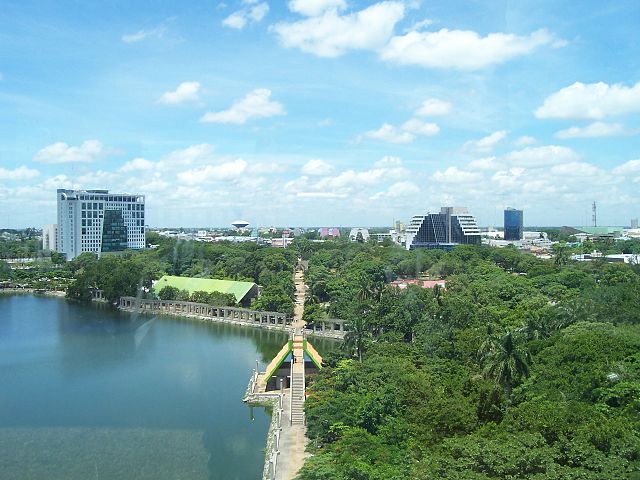
Mirador Lagoon - Villahermosa
For information about the weather in Mexico visit www.worldweather.org
You may also like to read

COLOMBIA - South America
Tour-smart shows that behind the reputation, Colombia has a lot to offer the traveller, facing as it does the Pacific Ocean and the Caribbean Sea.
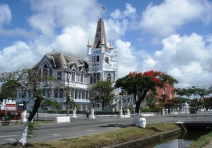
GUYANA - South America
One of Tour-smart's introductions to little know destinations, Guyana (formerly British Guyana) fronts the Atlantic Ocean on the north east coast of South America.

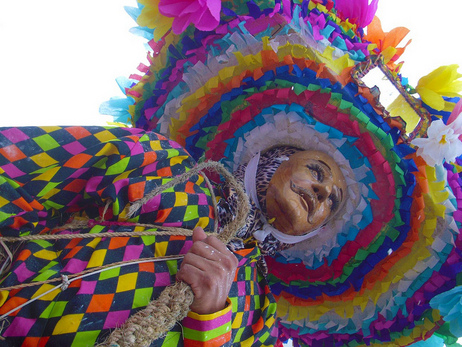
Comments